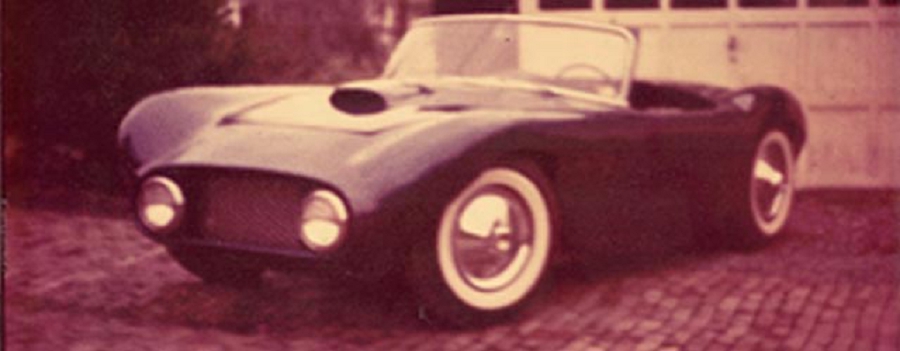
Hi Gang…
Today I’m honored to share the story of Roger Adam and his first sports car – a car that he built in ’58 called an Amquist Speedster. What makes this story even more special is that Roger grew up knowing Harry Heim who helped found Clearfield Plastics, and was friends with the guys such as Clark Mitchell and Dean Bailey who were part of the group that made the first Clearfield Sports Cars possible. He even met Ed Almquist of Almquist Engineering more than once back when he built his car in the ’50s.
It’s a great story to share and one that illustrates the tenacity necessary to build one of these sports cars.
Let’s begin.
Roger Adam: Hot Rodder From The Start
Roger was born in ’38, and in ’53 when he was 15 years old he built his first hot rod – a ’48 Ford hot rod which was souped up, de-chromed, and had electric doors and trunk. He built this car when he was in high school.
By the time Roger graduated in ’56, Harry Heim had already help create Clearfield Plastics in Clearfield, Pennsylvania, and seeing these sports car bodies got the wheels turning in Roger’s head. And by ’59, he was ready to build his first sports car.
Choosing The Body:
In ’59 he was 21 years old and working at an electronics company. He started building this car in his free time after work at on weekends. Roger had built hot rods before and always had a fast car. The idea of having a fast car that handled good always appealed to him, and onward he pressed. Although Roger had built many hot rods, this was the first sports car he would build.
In ’59, Almquist Engineering was now selling the bodies originally designed and sold by Harry Heim of Clearfield Plastics. And Harry was working with Ed Almquist to expand the bodies available for purchase. In fact, at the time Roger bought his 100” wheelbase body called an “Almquist Speedster,” they were offering two of the smaller bodies called “Sabre I” and “Sabre II” and three versions of the “Speedster” body. Roger chose the 100” wheelbase known as the “Speedster” model, and planned to use a Henry J frame to begin his build.
Fiberglass bodies were certainly keeping Ed Almquist and Harry Heim busy in Milford, Pennsylvania!
Roger Builds His Sportscar
When the body arrived it wasn’t primed – it was virgin, unblemished fiberglass. The hood and doors were cut out and required a little sanding and filing to fit. Roger used ’48 Chrysler trunk hinges for door and hood hinges.
The body that Harry Heim designed allowed great flexibility in the approach to your build. While the rear axle was fairly well fixed to a specific location in the body, the front axle could be located in various places given the open clamshell fender design at the front.
Roger used a ’51 Henry J chassis and Z’d the frame 6 inches front and rear – without changing the length / wheelbase of car. He also set the motor fairly far back. Dean Bailey did most of the welding on the frame and Roger watched and learned the skill on this frame.
Roger also cut the front coils and took two leaves out of the rear leaf springs (longitudinal) to get the stance of his car lower to the ground and to compensate for the lighter weight fiberglass body now installed.
Both Harry Heim and Clark Mitchell gave Roger advice on how to mount the body to his newly modified frame, and a single roll hoop was used in the cowl area to support the majority of the weight of the body. The firewall was sheet metal and this was fiberglassed to the body.
He used a windshield out of a ’51 or ’52 Oldsmobile convertible and molded the frame into the body. This was necessary because by law in Pennsylvania, a windshield with safety glass was required. A plastic windshield would not have met the local and state laws.
He welded the windshield frame directly to the roll hoop at the cowl area of the car. Roger also made a convertible top for the car – it’s fairly rare to see any fiberglass car with one of these, gang! The top snapped both front and rear over a framework. It didn’t fold, but it was a top and it Roger said it looked great
Pedal assemblies were overhead mounted ’53-’54 Ford, attached to the firewall and braced off of the front hoop. Steering, brakes and rims were Henry J. Tires were 6.70 x 15 – front and rear. The floor was wood – the only wood used on the car. Everything else was metal including the firewall.
Fitting The Drivetrain and Mechanicals:
To start, the engine was Ford V8-60 which was 100 over, relieved, used high-compression aluminum heads, 2 Stromberg 97 carbs, and a full race cam. It was a nice motor, but wasn’t fast enough to suit Roger, so in ’61 he installed a 283 ’58 Corvette motor. This motor was rebuilt by Roger, and had dual quads, a full race cam, and dual exhaust.
Originally the transmission was a top load 3 speed Ford. When the Corvette engine was installed, Roger used a Chevy manual 3-speed transmission with overdrive – it was the same year as Corvette engine. The rear axle was a Henry J – 456 and used for both the Ford V8-60 and Corvette engine configurations. And…when this new engine was installed, Roger installed a shifter from Amquist – it was Almquist all the way!
The radiator was mounted steeper than a 45 degree angle. The tanks were on the sides of the radiator and the expansion/filler tank was mounted to the engine – same setup as a Corvette engine. No fan was used with the radiator due to the angle of the radiator.
Roger says you didn’t need a fan because the radiator was so far in front of the engine that air easily came thru it. Most engines are up tight to the radiator, but because the typical “Special” has the engine mounted toward the center of the car – the radiator could be up front – way up front. This meant that in Roger’s car, you could almost stand in the space between the engine and the radiator. Roger reported that his car never overheated with this setup.
Henry J wheels with Studebaker hubcaps were used. The Studebaker hubcaps had the accessory spinners that were available for the Studebaker Speedsters, and Roger installed these spinners too – a fairly rare option.
The grille was from a ’58 Ford, and Roger also bought an Almquist fiberglass hood scoop and installed it. All Stewart-Warner gauges were used and included a manual tachometer and a 160 mph speedometer. At the rear he used 4 taillights of an unknown vintage. The frame at the rear stuck thru the car and was used to mount the rear bumper (not shown in pictures here).
Roger created the seats himself out of plywood with Naugahyde upholstery. Sides and floor were carpeted. When finished, the car was a dark “Belmont Blue” metallic, and the carpet was blue, black, and white speckled. The seats were black, and the dash was painted blue to match the car (it was a fiberglass over and aluminum dashboard).
The Roger Adam Almquist Speedster:
Let’s take a look at the finished product – these 3 pictures are the only ones that remain that show Roger’s car “back in the day.”
Surprises Along The Way:
Roger shared that it wasn’t easy placing and locating all parts together during the build. Fitting the engine, steering wheel, windshield – all of these required repeated attempts to get the fit just right. And Roger is 6’2’ tall so it was trial and error, so he remembers, getting the appropriate amount of leg room while taking the firewall, foot pedal box, and engine placement into account.
During the year that Roger built the car, he worked on it 3-5 days a week to get it finished. He estimates that it took around 1500 total hours to complete – maybe more.
Roger last drove his car in ’66 and kept it for another 30 years or so and in the ‘90s sold it to friend Clark Mitchell. During this time, Roger stored it outside, and it didn’t fare well. However, Clark had plans to create a new car using Roger’s original Almquist Speedster body on a modern Corvette chassis as a way of honoring his friends and memories of years gone by.
Clark finished the car and celebrates his Clearfield and Almquist memories each time he takes his Speedster out for a drive. But it doesn’t stop there. Clark Mitchell and Roger Adam celebrated their Almquist Speedster in 2010 at the Amelia Island Concours d’ Elegance and in 2011 at the Milwaukee Masterpiece Concours d’ Elegance. Enthusiasm knows no bounds
Click on the following links to see the restored car at both of these venues:
Clark Mitchell and His Almquist at the Milwaukee Masterpiece Concours d’ Elegance in 2011
Clark Mitchell and His Almquist Speedster at Amelia Island Concours d’ Elegance in 2010

Each Of The Pictures Shown Here Show Clark Mitchell With His Newly Built Almquist Speedster At The 2011 Milwaukee Masterpiece Concours d’ Elegance.
Summary:
I finished the interview with Roger by asking him how many Clearfield / Almquist bodied sports cars were running around Clearfield, Pennsylvania back in the day. He said that besides his sports car in the late ‘50s there was Clark Mitchell’s original car, and one or two built by Harry Heim. That was all.
If I could only send a camera back to the late ‘50s in Clearfield Pennsylvania. Boy would I keep that photographer busy!
Thanks again to Roger Adams and Clark Mitchell for their exhaustive help in making this story a reality to share here at Forgotten Fiberglass. All of us here appreciate the efforts each of you made back then – and today – to keep the memories Harry Heim, Clearfield Plastics, and Almquist Engineering alive and well in our new century – for all sports car enthusiasts to appreciate.
Hope you enjoyed the story, and until next time…
Glass on gang…
Geoff
——————————————————————-
Click on the Images Below to View Larger Pictures
——————————————————————-
- Roger Recently At Work On One Of His Race Engines
- Each Of The Pictures Shown Here Show Clark Mitchell With His Newly Built Almquist Speedster At The 2011 Milwaukee Masterpiece Concours d’ Elegance.
- Here’s A Happy Clark Mitchell At The Wheel Of His Almquist Speedster. Go Get ‘Em Clark!!!
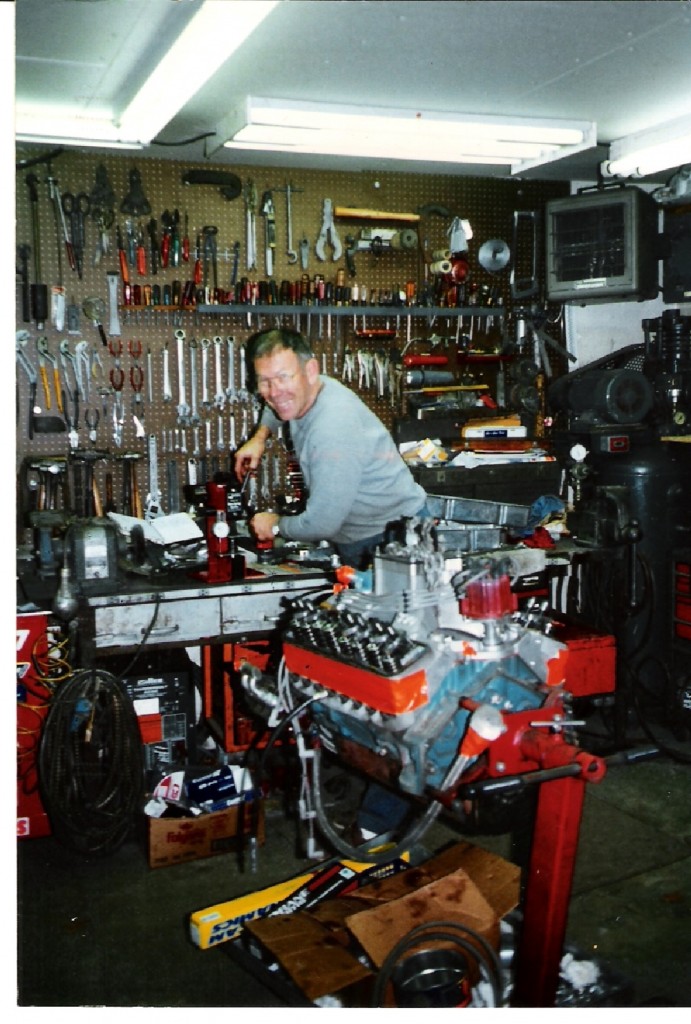
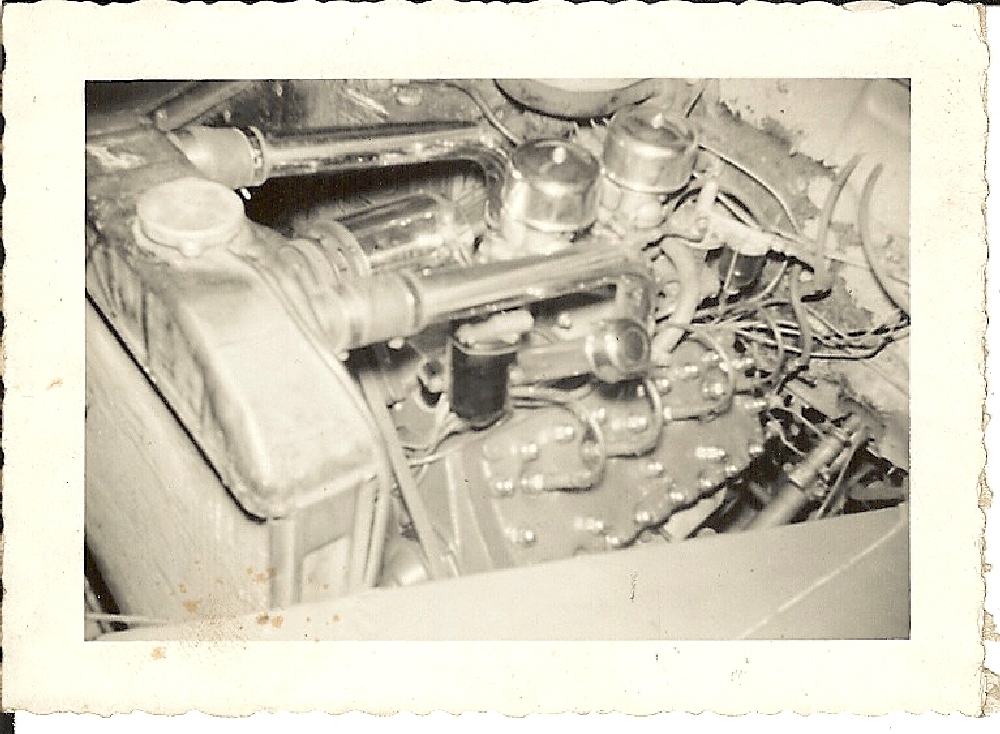
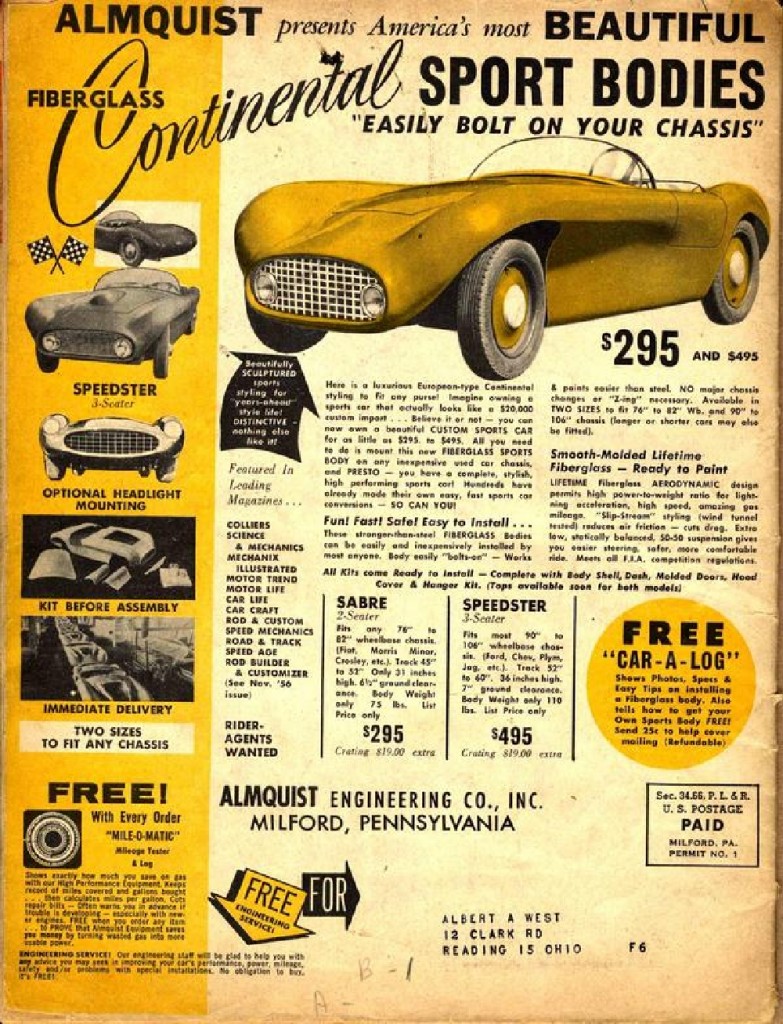

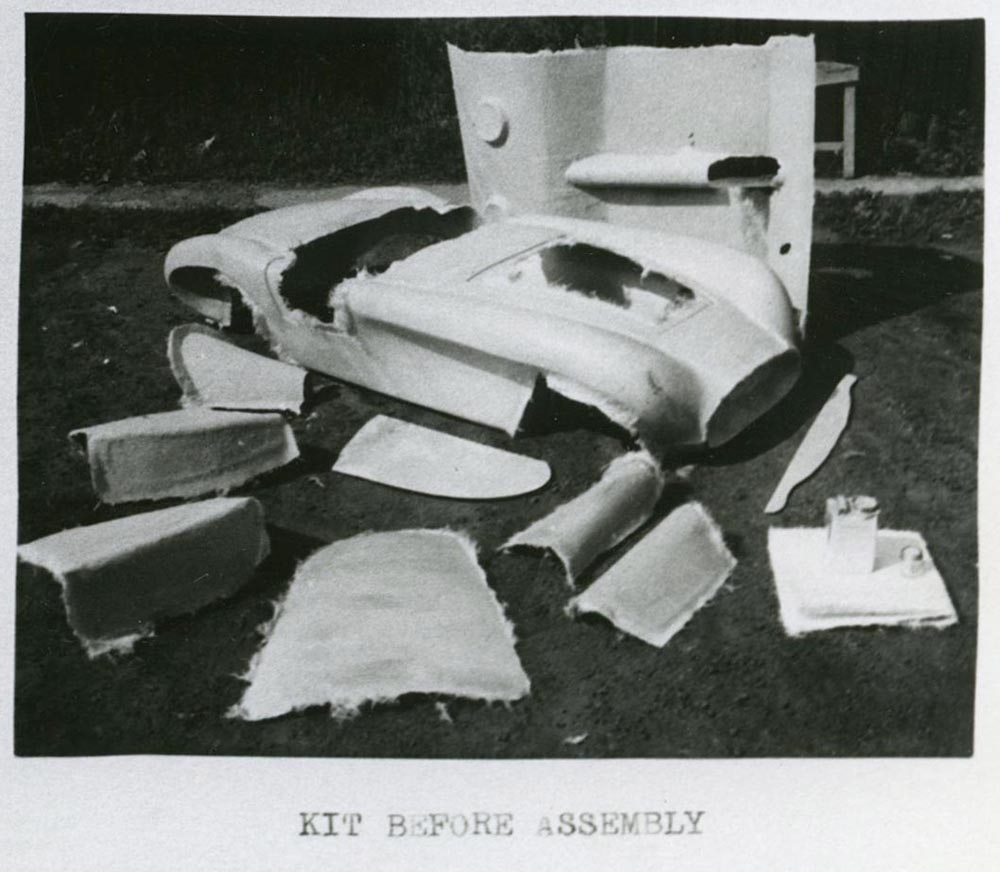
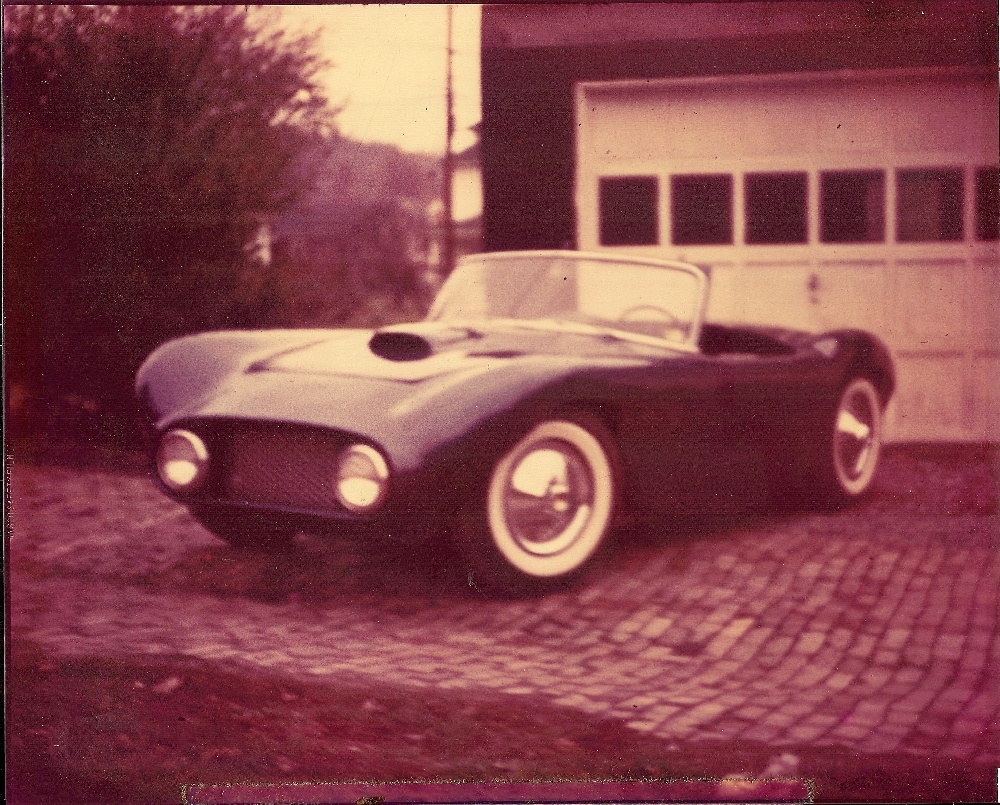


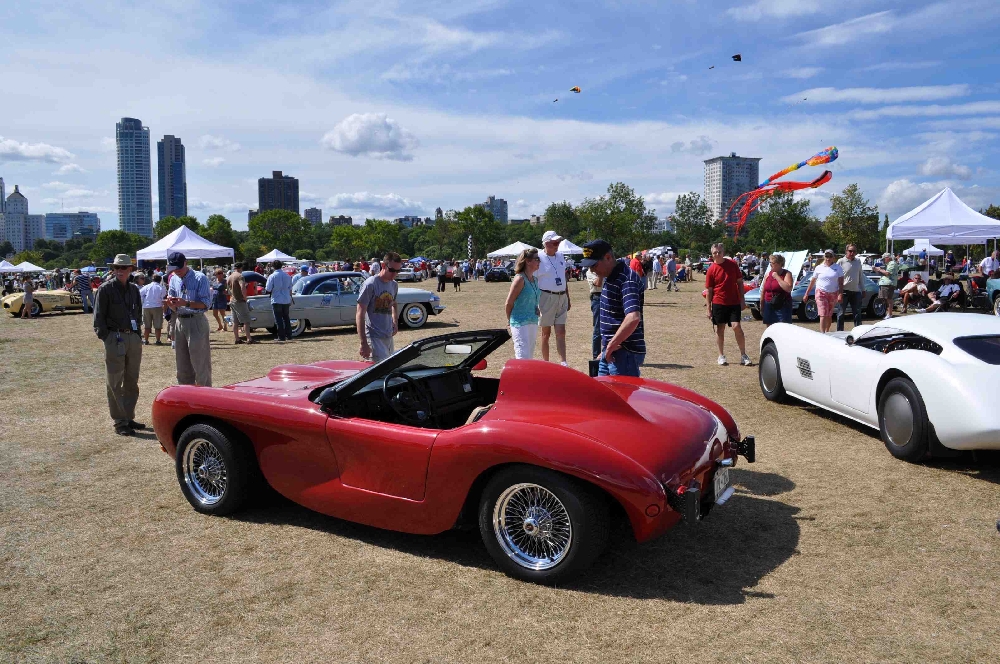


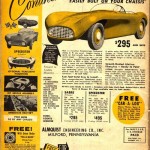
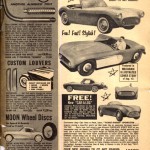
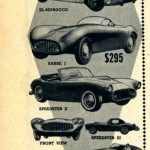
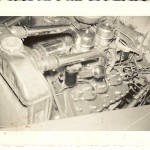
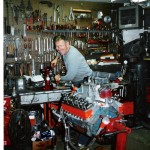
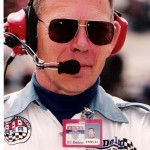
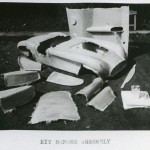
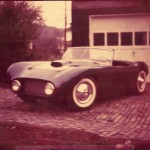
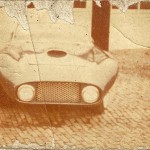
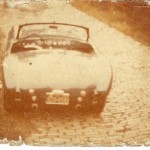
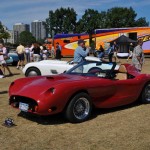
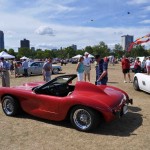
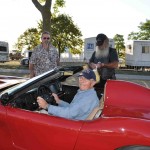
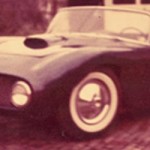
Nice article. Thanks for reviving the memories of the cars and the people that made them possible.
I saw this car and admired the work at the Milwaukee show, but was not familiar with its history. Despite the modern update, I wanted to comment on the first version’s Oldsmobile windshield. What an original and well-done adaptation, using what was available at the time, and integrating it so well to the modified Henry J chassis and cowl hoop. Very interesting, good-looking and different from the “pack”.
I didn’t expect to have anyone ever intrested in my old fiberglass car when Clark Mitchel asked me what I was going to do with the old car. One thing I was sure of was, I didn’t have time to bring it back to life so a deal was struck as he was probably the only person I could think of capable of the job. The results speak for themselves and Geoff tells the story so much better than I even could. The handling of the car was lacking when I first drove it, the Henry J had horrid bump steer. Building new steering (copy of 60’s G. M. idler arm/drag link setup) solved that, then on to speed improvments as Geoff described. Thanks everyone for your interest.
http://cgi.ebay.com/ebaymotors/1955-VICTRESS-C3-Coupe-first-year-VINTAGE1955-Chev-V8-LaDawri-Allied-race-street-/150757853020?pt=US_Cars_Trucks&hash=item2319de475c#ht_2284wt_1057
victress on ebay. happy bidding
Thanks to Roger and Geoff for collaborating on the history of Roger’s always totally focused inertia that makes his automotive ideas take form, and go down the road & track with great success. Roger could and still can . . ” . . do the whole thing solo : from building a chassis/engine/drivetrain/body . . .” This quality in his personality developed early in his life, and he has honed it to perfection.
Roger is the kind of a driver, where, if you have to take a nap, you can without even beginning to wonder, rain, snow, sleet or hail, if he’s gonna be able to keep ‘er on the road. The first time I rode with Roger in his car with the ’58 Corvette motor, it was quicker than a Lister Jag that I rode in at Cumberland Maryland during a warm up lap. Roger stopped, waited for the car sounds to catch up with us . . . and Doppler off . . . then he smiled and, “Your turn . ”
What a ride ! This beautiful sports got us down the road in style, and the electric overdrive switch activated upshifts/downshifts in a millesecond. We quickly learned to compensate for the drum brakes . . it handled great in the corners, and provided Roger with a prize that he built, virtually solo.
There is so much to tell about this era with Harry Heim, Clearfield Plastics, Harry Heim and Associates. What I treasure about Roger’s and Geoff’s history of Roger’s experiences is that, whoever reads this will be able to find an example that brings to memory, his/her own recall of similiar real-life-creative
endeavors . . . that have lead to further successful/creative outcomes.
Hey Clark,
I found this page while researching my new Devin special. Great to see you’re showing and enjoying your Almquist. Drop me a line and I’ll send some pics of the Devin.
Regards,
Dave
This is a great article Guys!!! I have printed a copy for the Clearfield Historical Society.
Jack